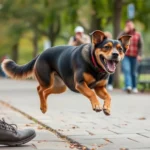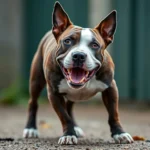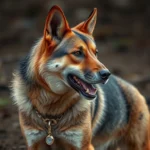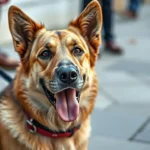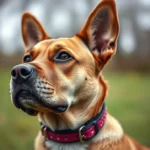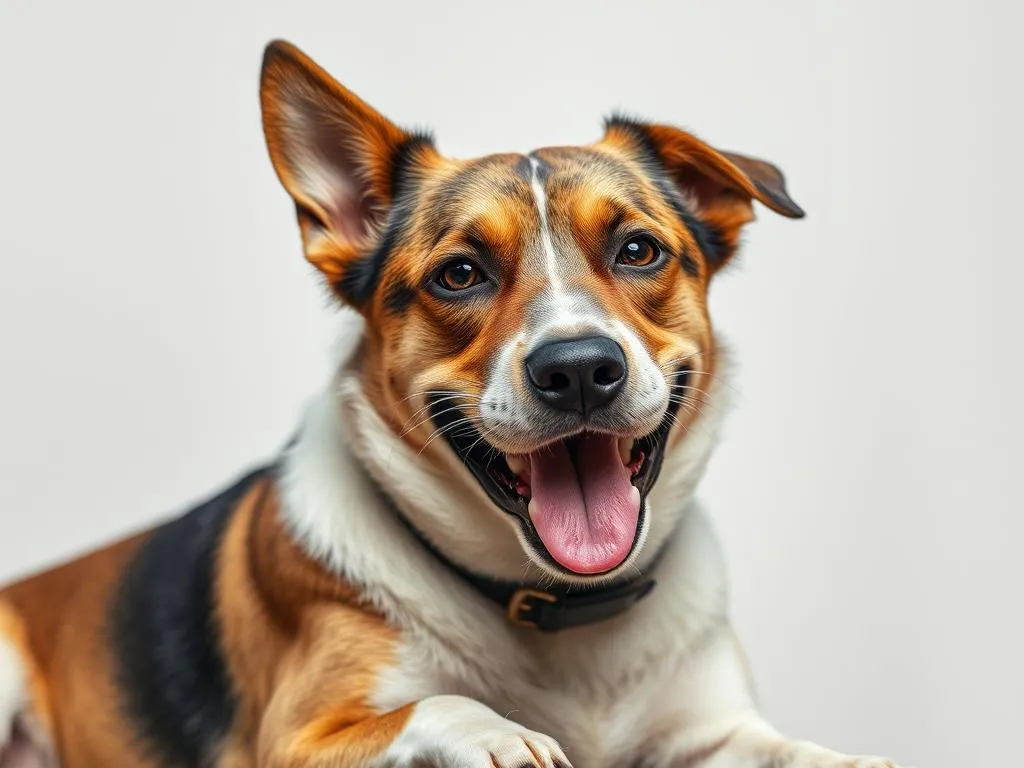
Introduction
Possessive aggression in dogs is a behavioral issue that can create significant challenges for pet owners. Possessive aggression occurs when a dog feels the need to protect or guard a specific resource, such as food, toys, or even space. This instinct can lead to aggressive behaviors if the dog perceives a threat from people or other animals approaching their valuable possessions.
Addressing possessive aggression is vital for ensuring the safety of both the dog and those around them. Aggressive displays can pose risks to family members, friends, and other pets, leading to potentially dangerous situations. Moreover, improving a dog’s behavior and socialization can enhance their overall quality of life and the bond they share with their owners.
In this article, we will explore several strategies to help you manage and ultimately stop possessive aggression in your dog. We’ll cover the causes and signs of this behavior, assess your dog’s aggression level, and delve into effective training techniques. By implementing the right strategies, you can create a safe and harmonious environment for your dog and everyone around them.
Understanding Possessive Aggression
Causes of Possessive Aggression
Understanding the underlying causes of possessive aggression is essential for effective intervention. Several factors can contribute to this behavior:
-
Genetic Factors: Certain breeds are genetically predisposed to resource guarding. Breeds such as Rottweilers, German Shepherds, and Doberman Pinschers may exhibit possessive tendencies more than others.
-
Environmental Influences: A dog’s upbringing plays a significant role in their behavior. Dogs that have experienced neglect, abuse, or lack of socialization during their formative years are more likely to develop possessive aggression.
-
Resource Guarding Instincts: Many dogs possess an innate instinct to guard resources. This instinct can be heightened in situations where dogs feel insecure or threatened.
Signs of Possessive Aggression
Recognizing the signs of possessive aggression is crucial for effective management. Here are some common indicators:
-
Body Language Cues: Dogs may display a stiff posture, growling, or showing their teeth when they feel possessive. These signals indicate that they are uncomfortable with proximity to their resources.
-
Behavioral Signs: Snapping, biting, or lunging are more overt signs of aggression. These behaviors typically occur when someone approaches their food bowl, favorite toy, or resting area.
-
Situational Triggers: Pay attention to specific situations that provoke aggression, such as someone reaching for their food during mealtime or sudden movements that startle them.
Assessing Your Dog’s Behavior
Evaluating the Severity of Aggression
Before implementing any training techniques, it is essential to evaluate the severity of your dog’s possessive aggression. Aggression can be classified into three levels:
-
Mild Aggression: Occasional growling or stiffening, often without actual biting.
-
Moderate Aggression: More frequent growling, snapping, or warning bites that can escalate if not addressed.
-
Severe Aggression: Actual biting that results in injury. In such cases, seeking professional help is crucial.
Understanding Your Dog’s Triggers
To address possessive aggression, you need to identify what specifically triggers your dog’s behavior. Keeping a diary of incidents can help you track patterns and observe interactions with people and other pets. This information is vital for tailoring your training approach to your dog’s unique needs.
Training Techniques to Stop Possessive Aggression
Positive Reinforcement
One of the most effective methods to curb possessive aggression is through positive reinforcement. This technique involves rewarding desired behaviors rather than punishing unwanted ones. Here’s how to implement it:
- Rewarding Desired Behaviors: Whenever your dog displays calm behavior around their resources, immediately reward them with treats or praise. This encourages them to associate positive experiences with the presence of people near their possessions.
Desensitization and Counter-Conditioning
Desensitization and counter-conditioning can gradually help your dog become more comfortable with perceived threats. Follow these steps:
-
Gradual Exposure to Triggers: Begin by exposing your dog to their triggers at a distance where they feel safe. For example, if your dog is possessive over a toy, have a friend hold the toy while you keep your dog at a distance.
-
Using Treats and Praise: As your dog remains calm, reward them with treats and praise. Gradually decrease the distance over time, maintaining their comfort level.
Establishing Boundaries
Setting clear rules and boundaries for resource access is essential in managing possessive aggression. Consider the following approaches:
-
Commands for Resource Access: Teach your dog commands such as “leave it” or “drop it.” These commands promote sharing and relinquishing items when asked.
-
Controlled Access to Resources: When offering food or toys, ensure your dog understands that they must follow specific commands before receiving their desired items.
Redirecting Focus
Redirecting your dog’s attention during potential triggers can prevent aggressive behaviors. Here are some techniques to consider:
-
Engaging in Alternative Activities: Redirect your dog’s focus when you anticipate a trigger. For instance, if they tend to guard food, engage them in a game or training exercise away from the food bowl.
-
Using Toys and Games: Introduce interactive toys that can distract your dog during moments of possessiveness. This not only diverts their attention but also promotes play and positive interactions.
Creating a Safe Environment
Managing Space and Resources
Creating a safe environment is crucial in managing possessive aggression. Here are some strategies:
-
Techniques for Managing Access: Limit your dog’s access to valuable resources when necessary. For example, consider feeding them in a separate room to minimize the potential for guarding behavior.
-
Safe Zones: Establish areas where your dog can retreat to feel secure without the risk of feeling threatened by others. This can be a designated bed or crate away from high-traffic areas.
Supervision and Intervention
Supervision is key in preventing aggressive incidents. Here’s how to effectively monitor interactions:
-
Importance of Monitoring: Always supervise interactions between your dog and others, especially in situations where possessiveness may arise. This allows you to intervene before an aggressive incident occurs.
-
Safe Intervention Techniques: If you observe signs of aggression, use calming techniques such as redirecting your dog’s attention or moving them to a different area safely.
The Role of Professional Help
When to Consult a Professional Trainer
In some cases, possessive aggression may require the expertise of a professional trainer. Consider consulting a trainer if:
- Your dog displays severe aggression that could lead to injury.
- You feel overwhelmed or unsure about how to proceed with training.
What to Expect in Professional Training
If you choose to work with a professional, here’s what you can expect:
-
Overview of Common Training Programs: Trainers often offer programs tailored to specific behavioral issues, including resource guarding. These programs usually involve both theoretical knowledge and practical exercises.
-
Importance of Follow-Up Sessions: Ongoing support can be crucial for reinforcing training techniques. Regular follow-up sessions help ensure consistency and allow for adjustments as needed.
Long-term Management and Maintenance
Continued Training and Reinforcement
Preventing regression in possessive aggression requires ongoing training and reinforcement. Here are some strategies:
-
Importance of Ongoing Training: Incorporate training exercises into your daily routine to reinforce positive behaviors. Regular practice helps solidify the lessons learned.
-
Setting Up a Routine: Establish a consistent training schedule that includes exercises for managing possessiveness. This routine can strengthen your dog’s understanding of acceptable behaviors.
Monitoring Behavior Over Time
Monitoring your dog’s progress and setbacks is vital for long-term success. Consider these tips:
-
Keeping Track of Progress: Maintain a log of your dog’s behavior over time to identify improvements and areas needing additional focus.
-
Adjusting Strategies as Needed: Be flexible in your approach. If certain techniques are not yielding results, consider revisiting your training plan or consulting a professional for guidance.
Conclusion
In summary, addressing possessive aggression in dogs is an essential aspect of responsible pet ownership. By understanding the causes and signs of this behavior, evaluating your dog’s aggression level, and implementing effective training techniques, you can create a safer and more enjoyable environment for everyone involved.
Improvement is possible with patience and consistency. As a dog owner, your commitment to understanding and managing this behavior will lead to a happier, more balanced dog. Start implementing these techniques today, and witness the positive changes in your furry friend’s behavior!

